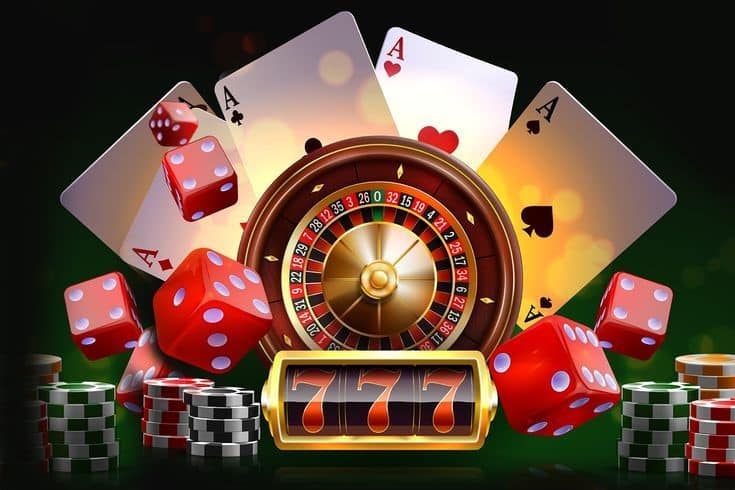
Within a dynamic and thrilling world of casinos, wherein luck and strategy intertwine, color and design play a critical role in attracting players. From the moment players step inside a casino or access a gaming platform, they are immersed in a visual feast that captures their attention and lures them to explore further. Vivid colors, captivating graphics, and innovative layouts are carefully crafted to create an atmosphere of excitement and anticipation, ultimately enhancing the gaming experience.
As players navigate through the dynamic landscape of casino games, they encounter a range of designs that not only serve aesthetic purposes but also affect feelings and decision-making. Hues like red and yellow symbolize wealth and fortune, while calm navy and emeralds can create a much relaxed environment. Understanding how these elements function together enables casinos to create an welcoming and stimulating atmosphere that encourages players to engage with the games, invest additional time at the tables, and increase their overall enjoyment.
The Study of Tint in Casino Games
Color plays a critical role in the creation of casino games, influencing player emotions and responses. Bright and bold shades, such as red and gold, are often used to ignite thrill and capture notice. These hues create a feeling urgency and dynamism, encouraging gamblers to engage more readily with the experience. By strategically selecting colors, creators aim to evoke feelings of pleasure and excitement, which can enhance the overall game experience.
Different hues also have psychological associations that can affect how participants perceive their possibilities of victory. For example, emerald is often associated with fortune and abundance, making it a well-liked choice in activities like roulette and poker setups. This association can result gamblers to feel more hopeful and self-assured in their play, ultimately encouraging them to bet more. Comprehending these links allows game designers to create environments that enhance player satisfaction and retention.
In addition, the interface of gambling game interfaces often uses gradients and opposing hues to direct players’ actions. For instance, successful outcomes may be emphasized with vivid, contrasting colors, creating a visual cue. This approach strengthens positive outcomes and promotes repeated participation. By utilizing the science of color, gambling establishments can develop games that not only captivate participants but also maintain them engaged and invested in their gaming experience.
Creative Elements that Attract Players
The visual appeal of casino games is primarily influenced by the use of bold colors. Lively and striking colors are deliberately chosen to create an inviting atmosphere that captures interest. For example, reds and golden hues often signify luck and prosperity, which is why they are prevalent in the palettes of slot machines and game surfaces. These colors not only draw players in, but they also stir emotions associated with excitement and anticipation, enhancing the overall gaming experience.
In addition to color, the design and organization of casino games play a crucial role in player attraction. Games are designed to be intuitive, ensuring that players can easily understand the guidelines and mechanics. Accessible interfaces, along with engaging graphics and animations, help maintain gamer interest and promote extended play sessions. The physical elements, such as the texture of the controls and the audio of the games, also contribute to a holistic sensory experience that keeps players immersed. casinos not on GamStop
Finally, conceptual elements in gaming design can greatly influence gaming decisions. Many casino games are inspired by media, myths, or adventure themes, incorporating symbols and characters that connect with players. These themes create a sense of engagement and relatability, making each game feel distinct. When players feel a bond to the theme, they are more likely to opt for that game over others, leading to higher participation and enthusiasm within the casino environment.
Case Studies: Notable Casino Slot Designs
One prime example of impressive gambling game design is the well-known slot machine series themed around hit movies. Games such as those based on the The Wizard of Oz and Game of Thrones utilize dynamic colors and superior graphics to engage players in recognizable narratives. The use of lively visuals and engaging sound effects takes the focus of players, establishing an psychological connection to the theme. This tactic not just fosters longer play but also improves the overall gaming experience, leading to increased player retention.
Another effective case is the application of color in table games like 21 and roulette. Casinos often develop these games with deep reds and greens, colors traditionally associated with luck and wealth. For instance, the emerald felt on a 21 table provides a relaxing effect, while the crimson accents in roulette invite excitement. This thoughtful use of color helps to create an inviting atmosphere that motivates players to join in, addressing their psychological impulses and enhancing their enjoyment.
Finally, social casino games that feature community features and lively, dynamic designs have achieved remarkable success in engaging players. Games like Zynga’s Poker and Slot-O-Mania leverage striking colors and playful animations to establish an inviting online environment. The integration of leaderboards, community sharing options, and in-app rewards fosters competition and community, pulling players in for longer sessions. Such designs not just make the games visually enticing but also highlight community engagement, a key factor in player retention and engagement within digital casino environments.